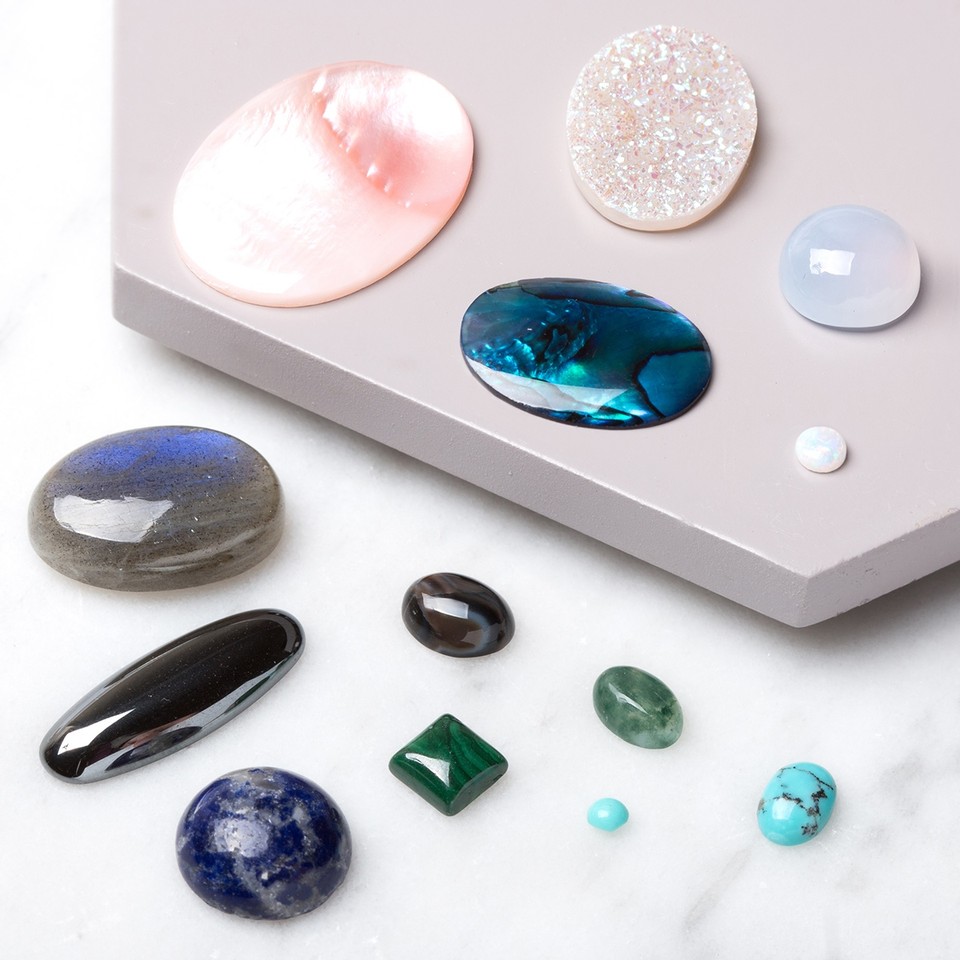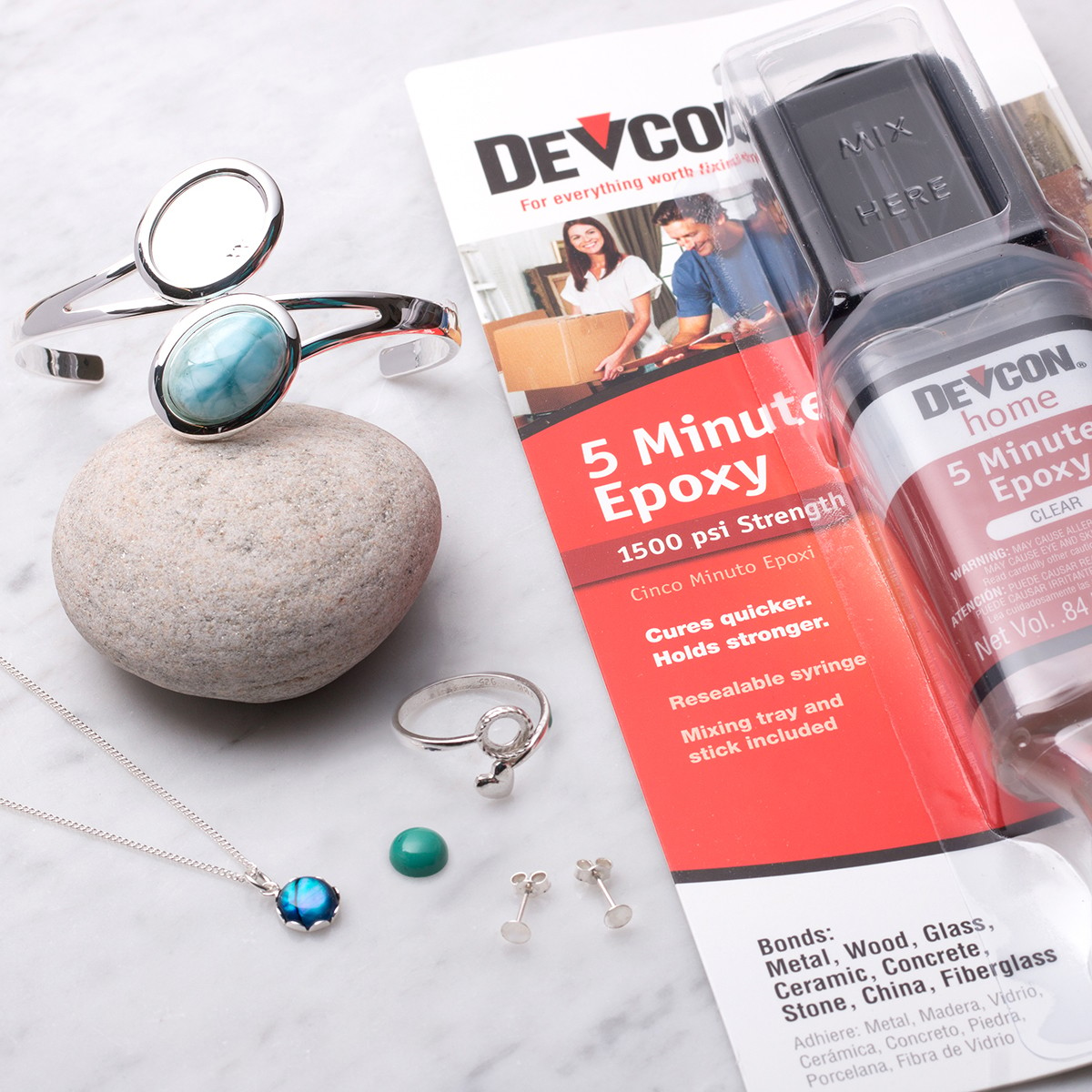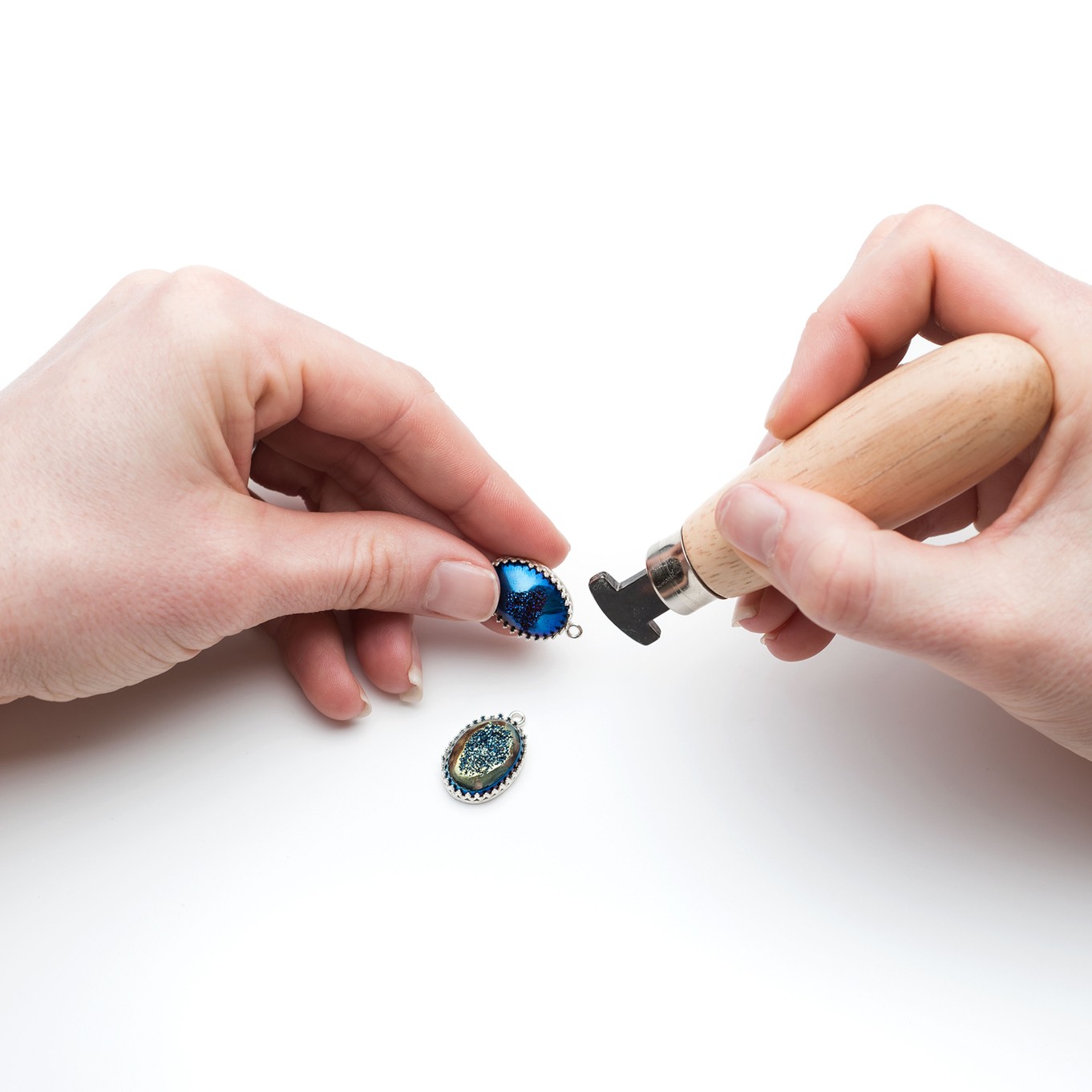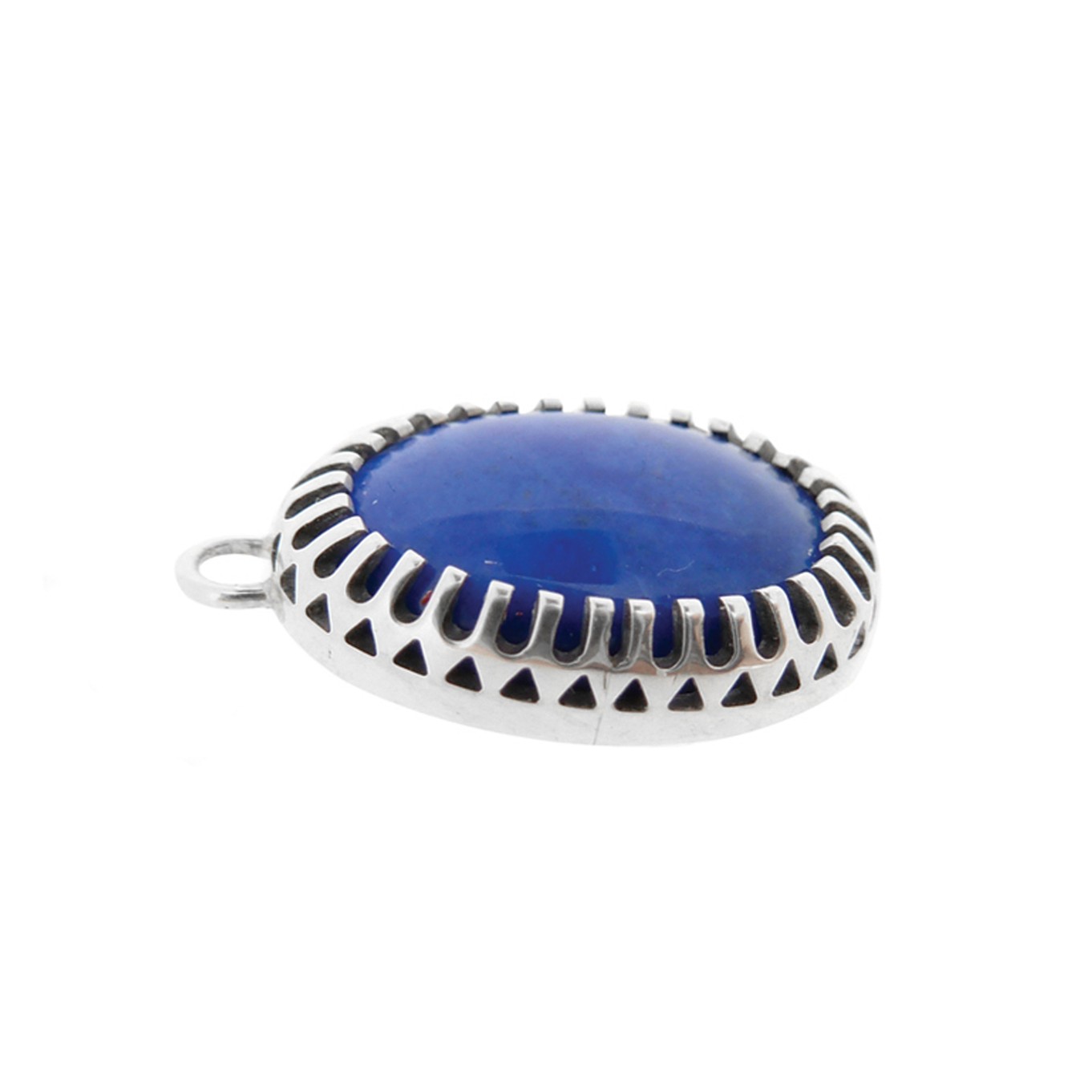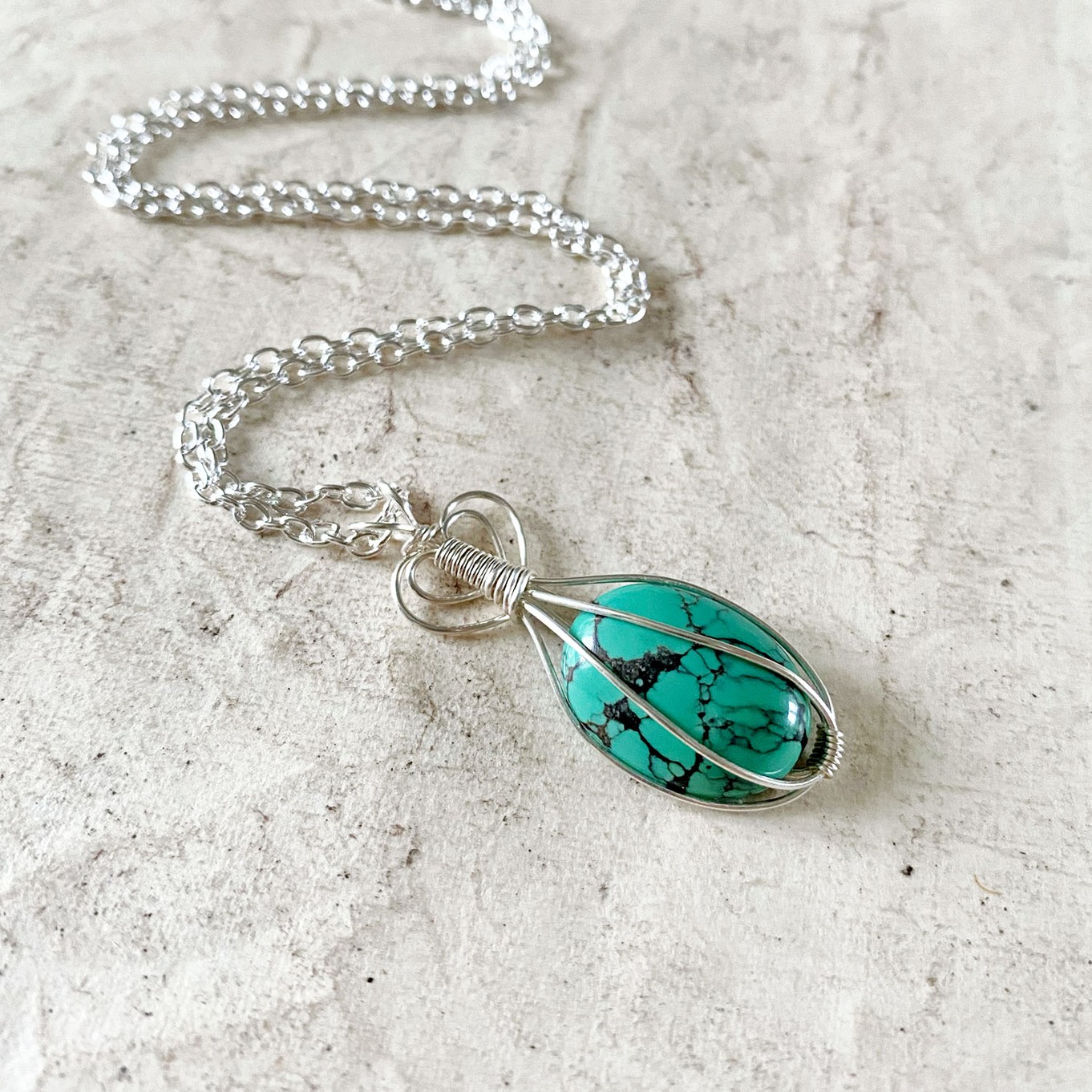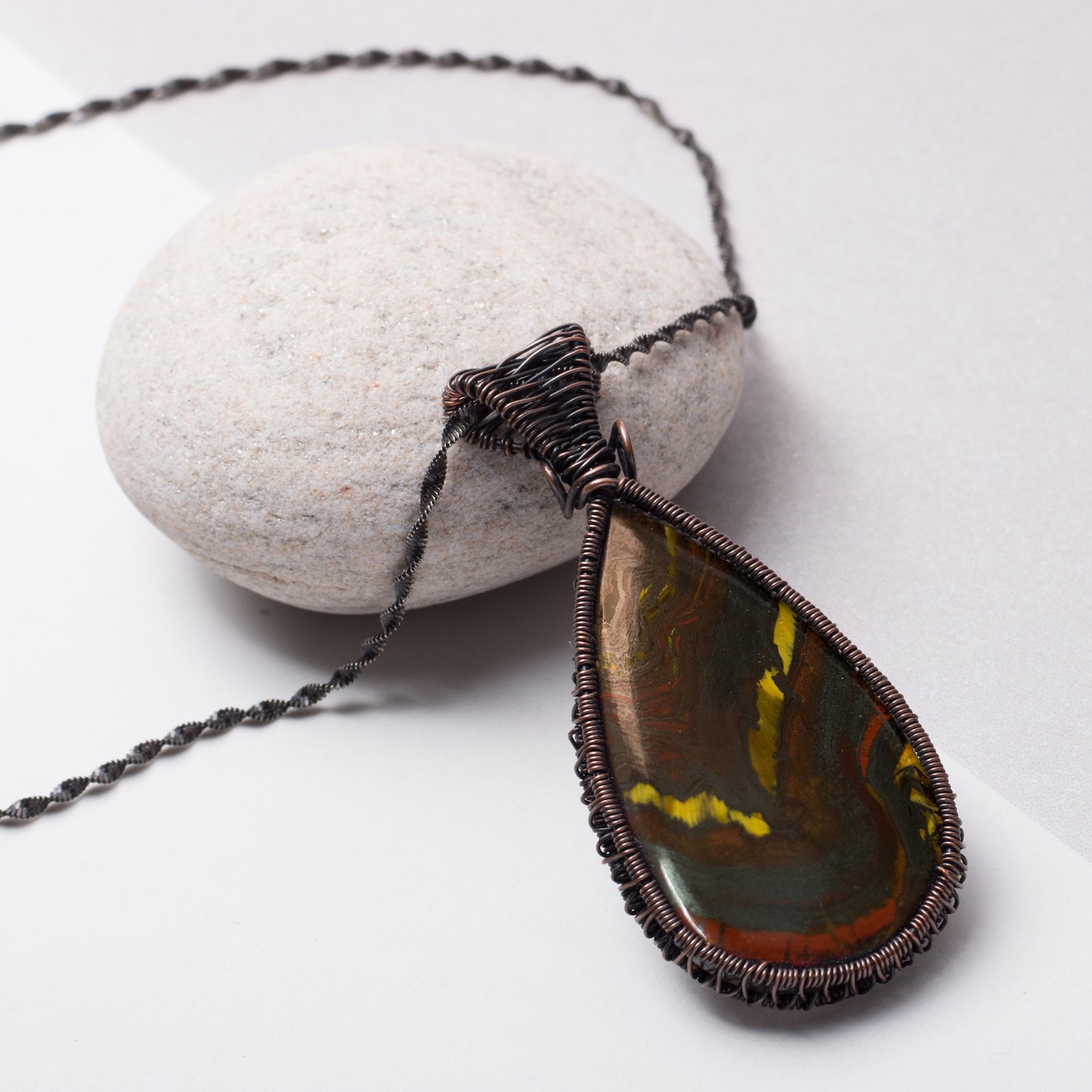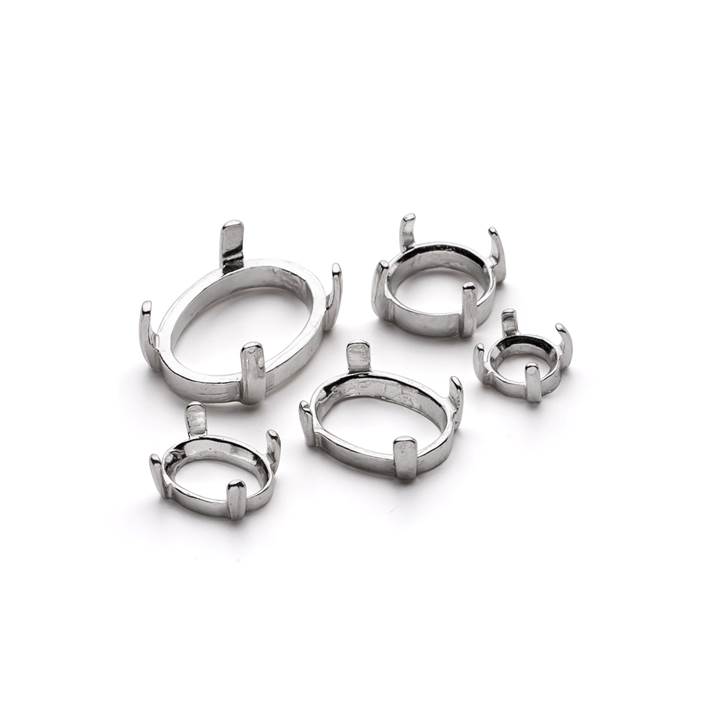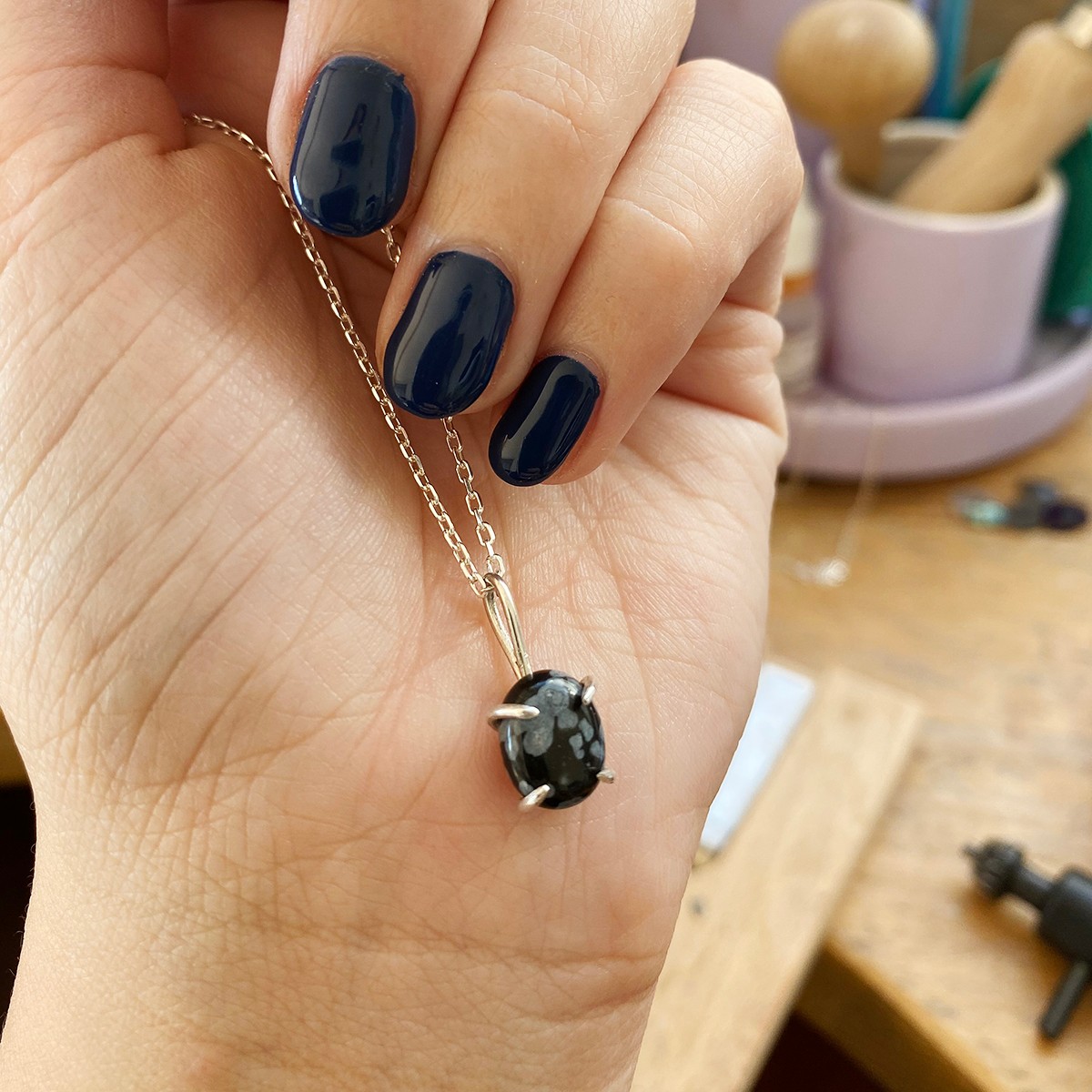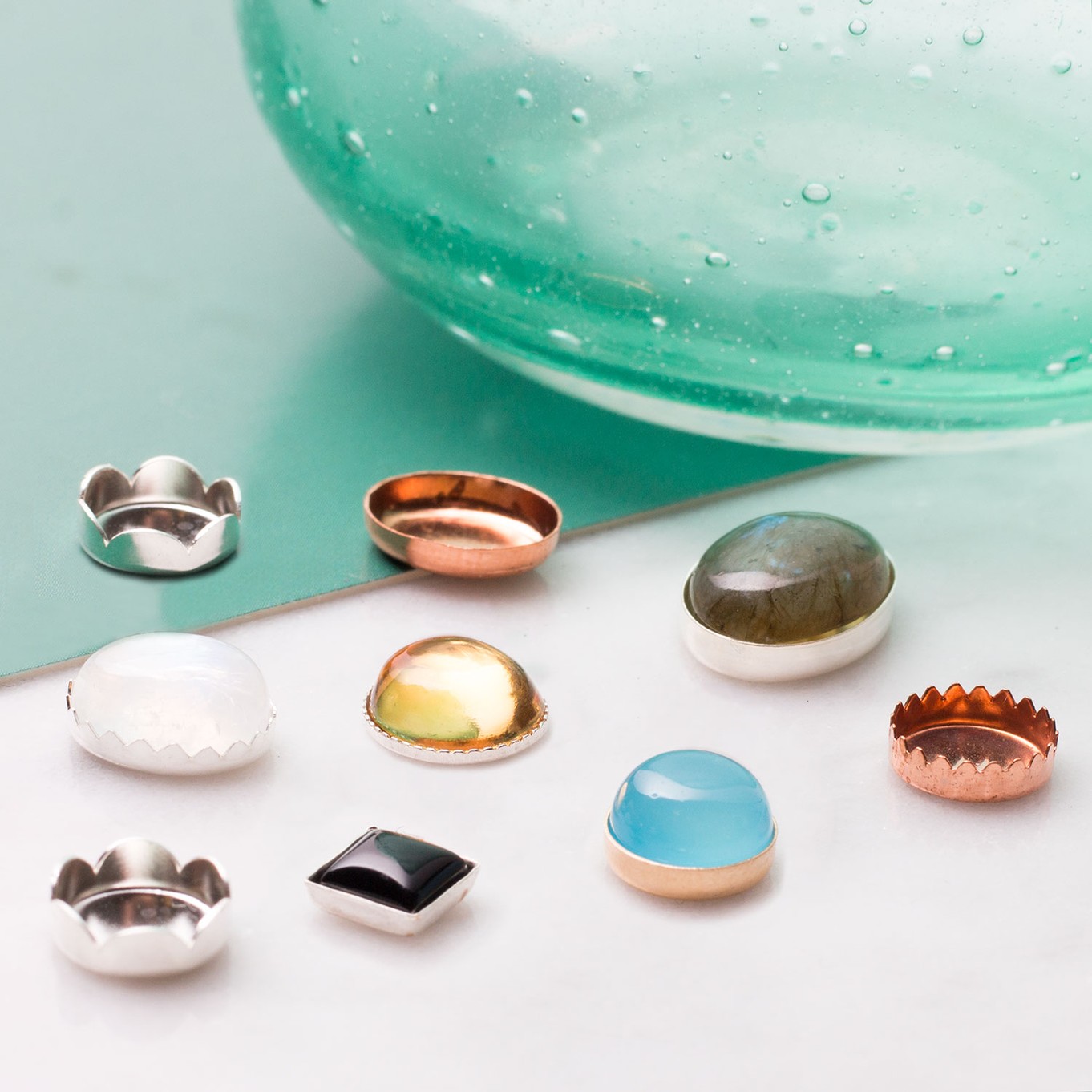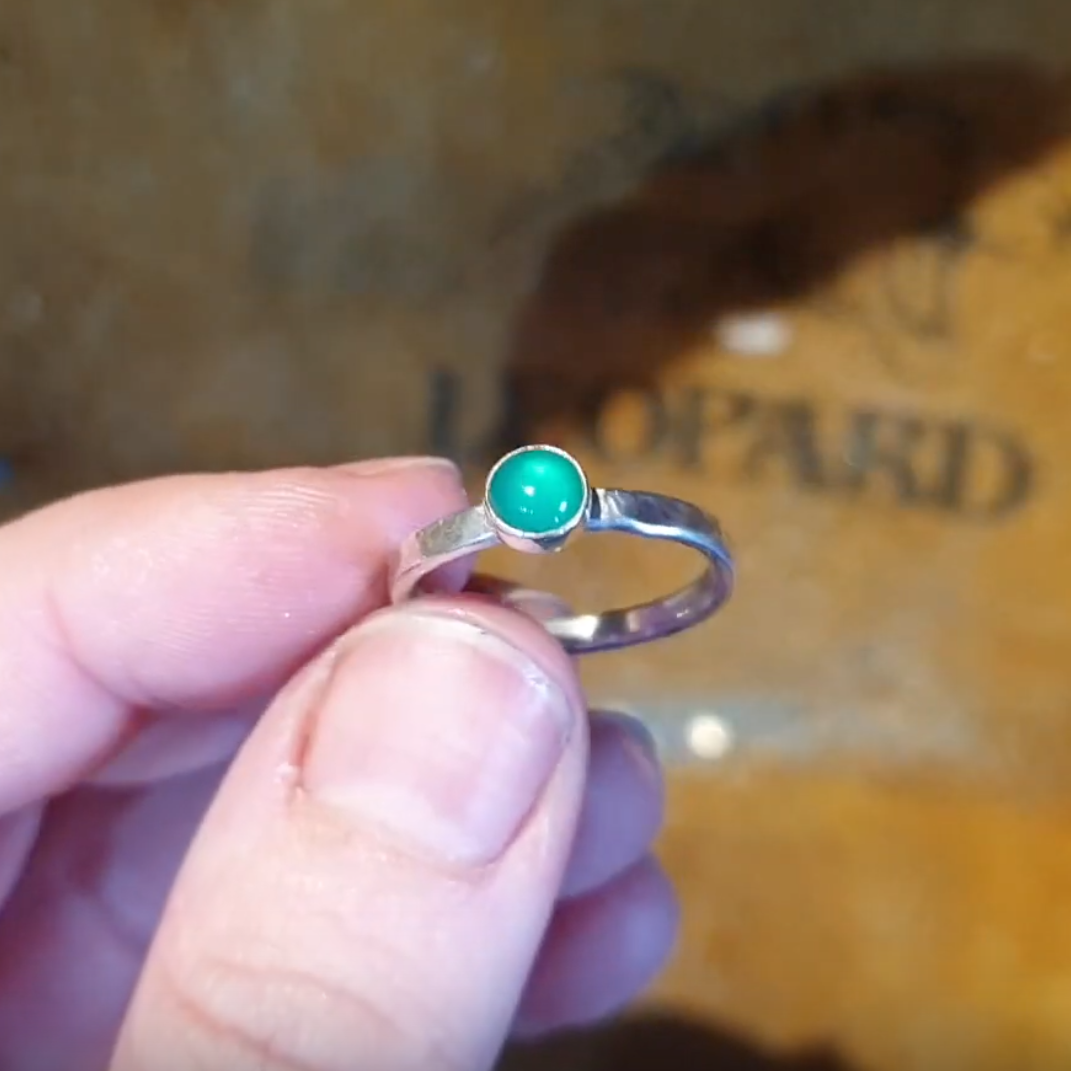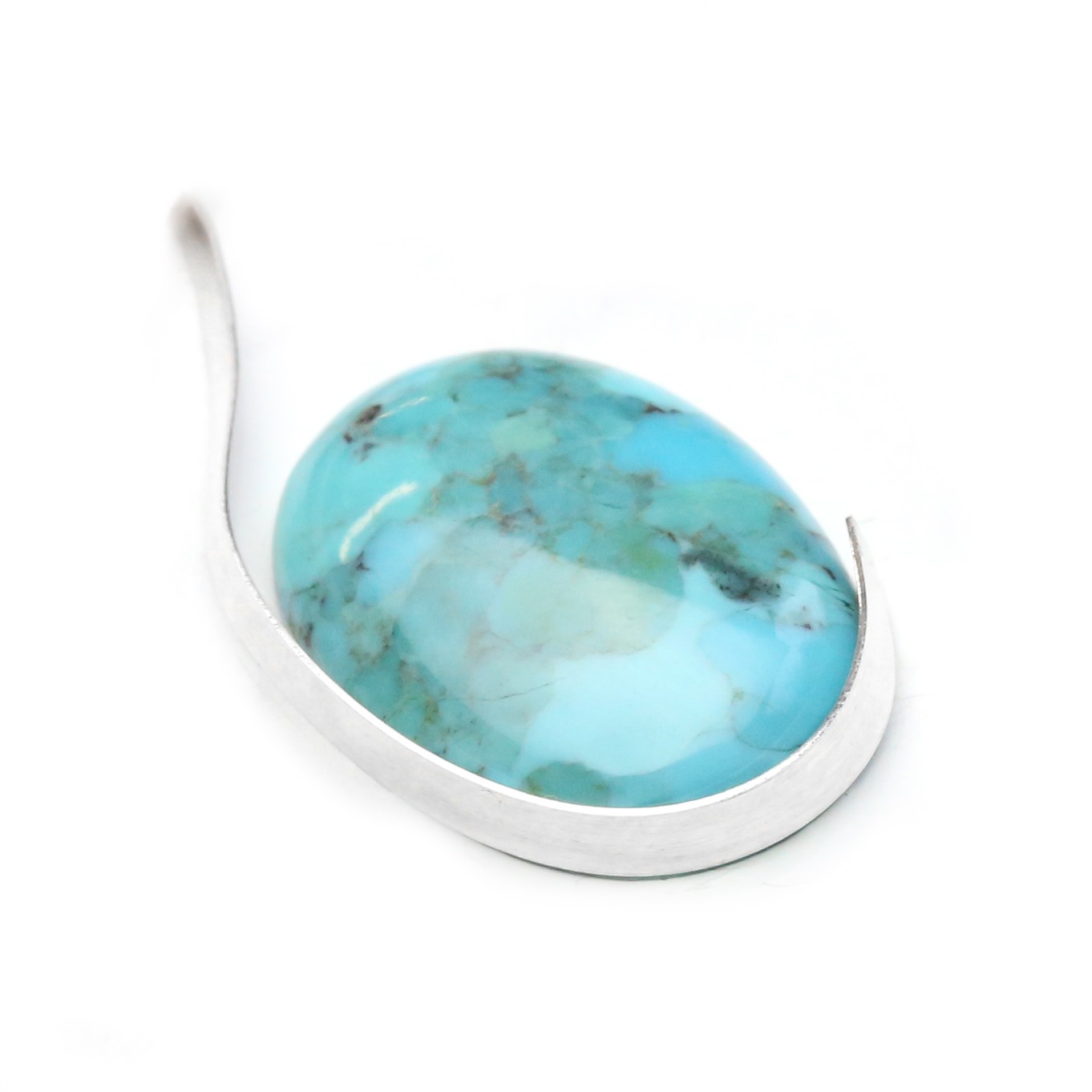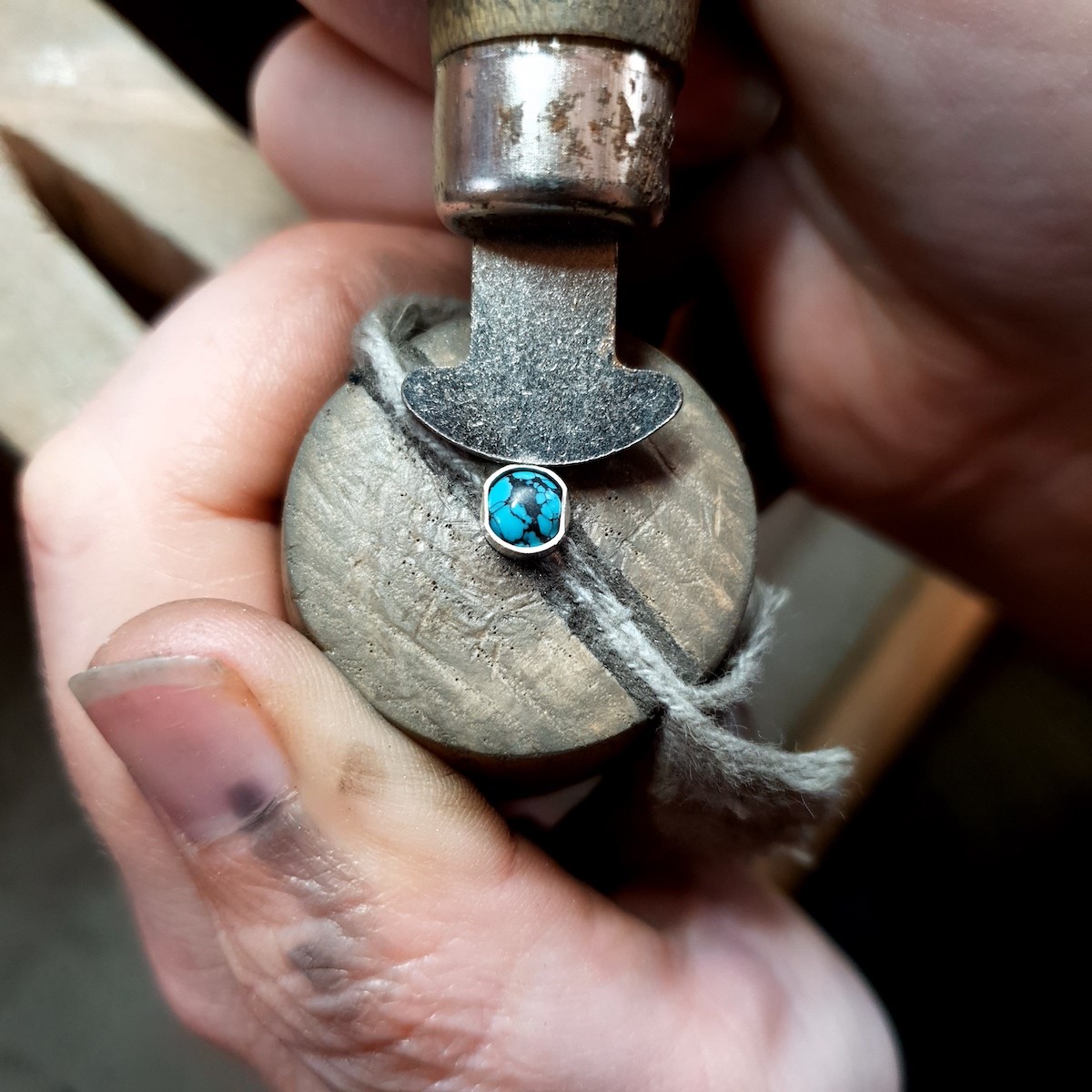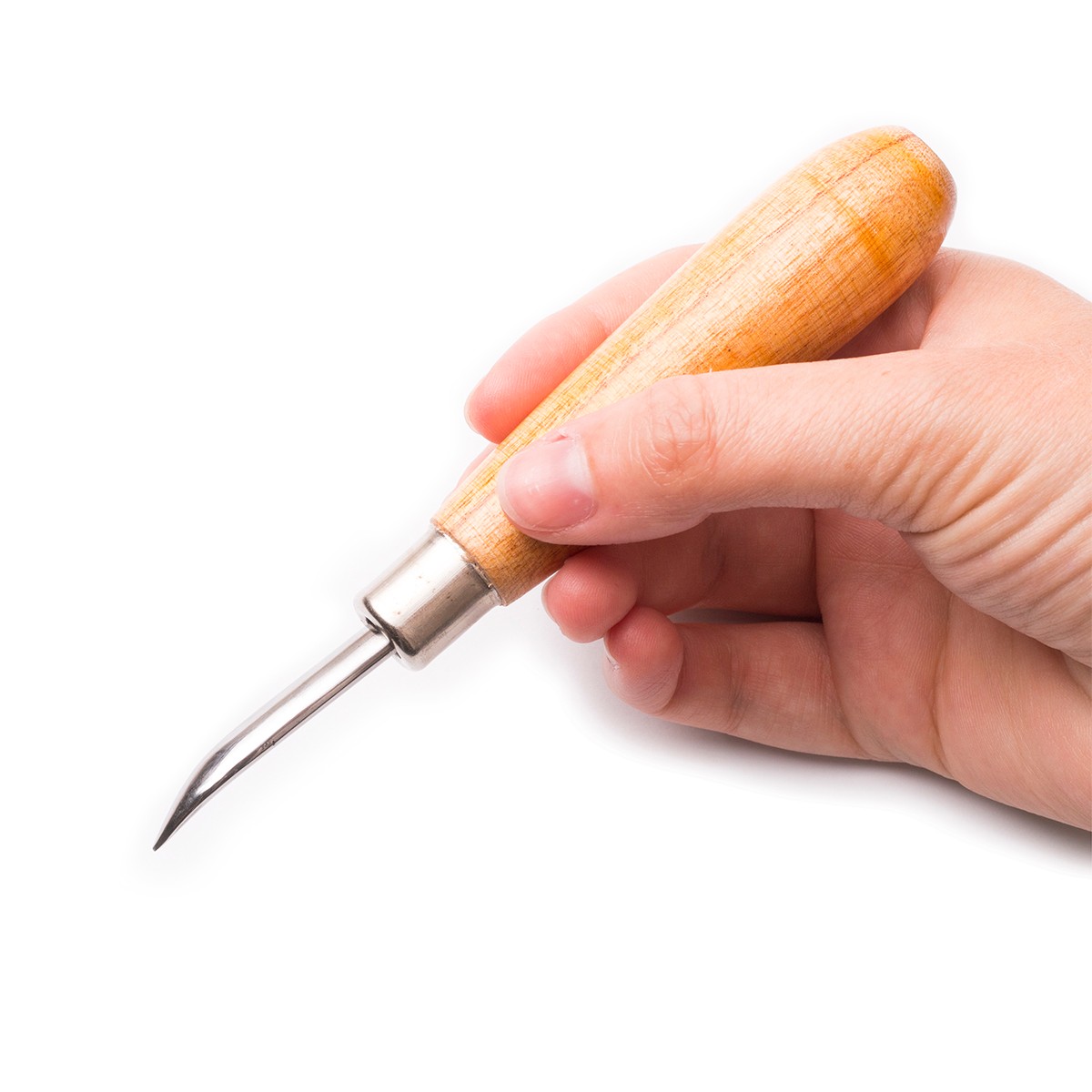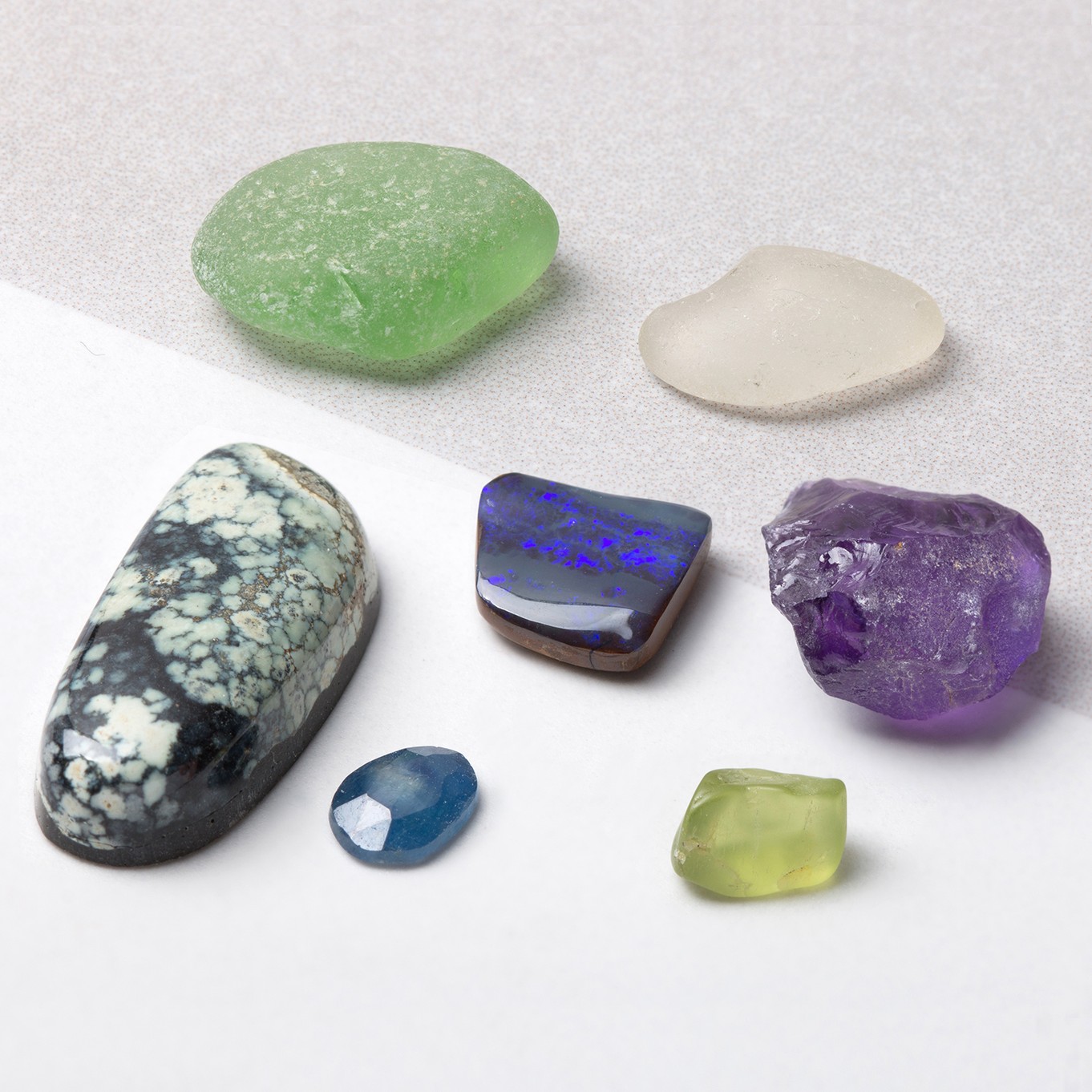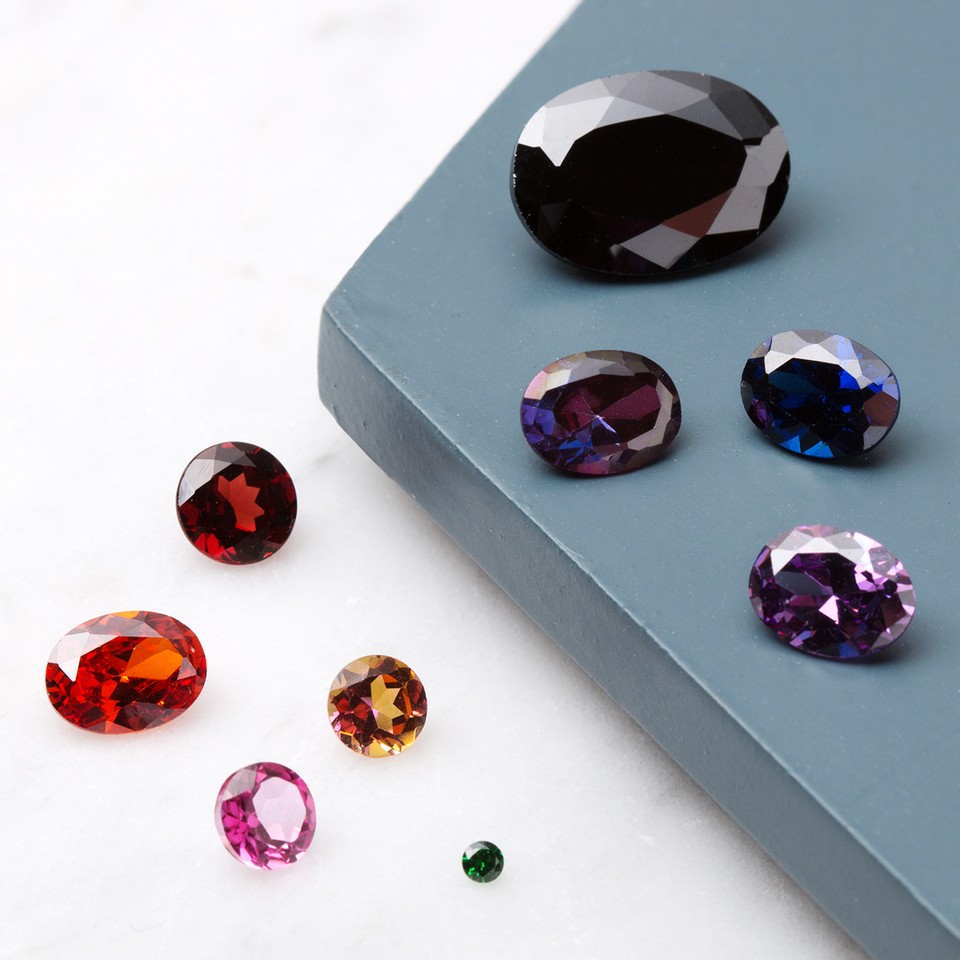Types Of Settings For Calibrated Cabochon Stones
Your chosen stone will determine the type of setting you will need to use or make for a piece of jewellery. Cabochons, faceted stones and freeform gemstones will require different settings.
On this page we share with you our favourite settings for cabochon stones, starting with great beginner friendly settings up to more advanced bezel setting techniques.
What is a cabochon stone?
A cabochon is a stone that has been shaped and polished to be a dome shape on the top and is usually flat on the bottom - some even have beautiful faceted tops to add sparkle and interest. Cabochons can come in different shapes and sizes, which is also something to keep in mind when deciding the best setting for the job.
Gemstones that are opaque are usually made into cabochons whereas more transparent gemstones are mainly faceted. The hardness of the stone is also taken into consideration - softer stones are more likely to be scratched so they are better in a cabochon form rather than faceted.
You will also find that cabochons are more likely to have natural inclusions and markings. In faceted form, this would disturb the light and decrease the beauty of the stone.
What makes a calibrated cabochon?
Within the jewellery industry, calibrated cabochons are made to a specific size and shape, which makes them easier to use with standard sized settings.
Shop our full range of cabochon stones here
Flat Plate Setting: Great For Beginners
If you're at the beginning of your jewellery making journey or simply want to make some quick and easy gifts, we recommend checking out our range of flat plate settings. Simply apply glue to the setting and set with your favourite cabochon to complete the look - just check you're using the correct sized stone for the setting.
Shop Flat Plate Settings
At Kernowcraft we have a range of flat plate cabochon settings to choose from! Including ring settings, earstud settings, pendant settings, bangle settings and link settings.
Recommended Glue: Devcon 5 Minute Epoxy
Devcon 5 Minute Epoxy is our favourite glue to use for gluing our gemstone cabochons to flat plate settings. Our top tip is to use sandpaper to roughen the metal surface, before setting to ensure a strong bond. Watch how easy this glue is to use in the video below.
Watch how easy it is to make a gemstone ring
Watch how we use Devcon 5 Minute Epoxy Glue to set one of our beautiful amethyst cabochons into our popular sterling silver, adjustable ring setting. A perfect gift idea!
Gallery Wire Setting
Another popular ready made setting are gallery wire settings! These are super popular as they are so easy to use and give you lots of possibilities for designs. They are designed to be used with cabochons, they have patterned wire around the outside which is great if you want to add some interesting decoration to your piece. All you have to do is add your chosen stone to the setting and use a bezel rocker to gently push the wire over the stone to keep it in place.
Shop Gallery Wire Settings
Choose from gallery wire pendants, ring settings to link settings so you can make a whole range of beautiful jewellery designs using your favourite gemstone cabochons.
Use A Bezel Rocker To Set
Gallery wire settings couldn't be easier to set! Use this handy tool featured, called a bezel rocker to gently push the claws over the stone. Work from all sides and gently rock back and forth, with downward pressure until the stone is nice and secure. This gives an even and clean setting that looks really professional.
Gallery Pattern Wire
If you would like to push your skills further, you can use patterned gallery wire to create your own cabochon settings from scratch.
This is a great alternative to using bezel strip, which is featured in a project towards the bottom of this page along with tutorials to follow. Use the same techniques used in the projects but with this decorative wire instead!
Wire Wrap
Wire wrapping a cabochon stone is another really popular way to transform a stone into beautiful jewellery! As you can see from the wire wrapped cabochon examples below, you can really play around with the design to suit your style.
We recommend checking out our wire work tutorials, with plenty of advice, guides and tutorials on using wire to create jewellery designs.
Claw Setting
A claw setting is pretty self explanatory, they have claws that get pushed over your stone which keeps it secure and in place. Below we share with you our ready made settings as well as a brilliant step by step tutorial on how to make your own.
You will also find that claw settings are a popular choice to use with faceted stones, and you will find a range of ready made claw settings made for faceted stones here.
Cabochon Claw Settings
These ready made sterling silver claw settings are a great alternative to your traditional bezel setting, they can be easily soldered onto your designs to create rings, earrings, pendants and brooches. Simply use a pusher to push the claws over the cabochon to hold it securely in place. Choose from our range of shapes and sizes available. As commercially cut stones have a size tolerance you may need to work on the setting prior to fitting your desired stones.
Make Your Own Claw Setting: Follow The Tutorial
Guest tutor, Hannah from Fox & Blue shares with you a step by step tutorial on how to make your own claw setting for a small cabochon stone. This project can be easily adapted and applied to various sized cabochons as well as rough crystal stones too. You may wish to use the standard four claw setting or add extra stability and character with the use of more claws - it's all about getting creative and having fun with it!
Bezel Setting: With Bezel Cups
Ready Made Bezel Cup Settings
Bezel cups are a great time saver and are particularly suitable for smaller sizes which would be tricky to create yourself. We recommend using bezel cups at the start of your metalsmithing journey, as they are a great way to introduce stone setting into your skillset without the need to solder bezel strip to a metal sheet back plate cut to the shape of your chosen gemstone cabochon. Bezel cups are sold in a range of shapes and sizes, so can be used with most of your favourite cabochons. Don't forget that calibrated stones have a size tolerance, so some adjustments may need to be made when setting your chosen stone - more information can be found below.
Make Your Own Gemstone Ring With A Bezel Cup
Kim shares with you a step by step tutorial on how to make your own gemstone ring using a bezel cup. We recommend watching Kim's video below, which walks you through the project which also includes some great tips along the way.
This project is part of the 12 Months Of Metal video series which can be found on our blog, with lots more brilliant metalsmithing techniques and tutorials to follow.
Bezel Setting: With Bezel Strip
Fine Silver Bezel Strip
Bezel strip is used for creating bezel settings for cabochon stones and is a great beginner friendly way to get started in stone setting. It's made from fine silver which is slightly softer than sterling silver, making it lovely and flexible to easily rub over the stone.
At Kernowcraft, we offer 2 depths, the 3mm bezel strip is most suitable for smaller stones and wider option is useful for stones with higher domes. If your bezel is too high, you can simply file it down to your desired height.
Watch Tutorials Below Featuring Projects Using Bezel Strip
How Much Bezel Strip/Gallery Wire Do I Need?
We frequently get asked what is the best length to cut your bezel strip, bearer wire or gallery wire when making settings for cabochon gemstones. We've worked out the following lengths as a rough guide to how much you'll need for setting some of our most popular cabochon sizes.
10x8mm oval - approx 4cm
14x10mm oval - approx 5cm
18x13mm oval - approx 7cm
25x18mm oval - approx 9cm
40x30mm oval - approx 13cm
Don't forget that this is only an approximate guide and we always advise you get a little extra to allow for mistakes etc – we all know there's nothing worse than not having enough or making a mistake and not having enough to correct it or try again! Another tip is to wrap a thin strip of paper around your stone, mark where the two ends meet and then measure the length of paper and add a bit for 'just in case!'
Bezel Setting: With Metal Sheet
How To Make Your Bezel Setting Using Metal Sheet
If you want to push your metalsmithing skills to the next level, follow this brilliant tutorial by guest tutor Oonagh on how to create your own bezel setting using metal sheet for a cabochon stone. Whether you use bezel strip or metal sheet for creating your setting is all down to personal preference and the kind of design you're after.
Using metal sheet for the setting will offer a more chunky and bold setting, as well as providing a stronger setting.
This tutorial covers a range of techniques that will help you create more beautiful handmade designs.
More Helpful Advice Pages
We hope this advice page has given you the inspiration and knowledge to help you get starting in making beautiful gemstone cabochon jewellery! For more helpful pages on cabochons and jewellery making, take a look at the pages below.
Calibrated Stones & Size Tolerance
It's important to know that there is a size tolerance with calibrated stones, which means that even if you choose the correct sized bezel cup for a cabochon it may not always be the perfect fit. This means you may need to adjust your setting. Read our advice page with frequently asked questions on this topic.
How to adjust bezel cups to fit cabochons
As we have discussed, calibrated stones have a size tolerance which means you may have to make adjustments to your settings when stone setting. On this advice page we share with you our favourite tools and techniques for adjusting settings as well as top tips for sourcing stones.
Learn More Stone Setting Techniques
Also in this section:
- The Essential Tools For Setting Gemstones
- Your Guide To Stone Setting Burrs For Jewellery Making
- What Is A Bezel Rocker?
- Types Of Settings & How To Use Them
- Types Of Settings For Calibrated Cabochon Stones
- Types Of Settings For Faceted Stones
- Types Of Settings For Free-Form Stones & Crystals
- Calibrated Gemstones & Size Tolerance In Jewellery Making
- Ready Made Settings vs Making Your Own Settings
- 7 Ways To Make Your Own Gemstone Ring
- How To Set Earstuds For Half Drilled Beads
- How to Set Flat Plates and Milled Edge Jewellery Settings
- How To Set Snaptite Settings
- How To Set Gemstones In Gallery Wire Settings
- How To Set Backset Settings
- How To Set Wraptite Settings
- How To Use Huggie Claw Settings For Crystals & Sea Glass
- What Are Bell Caps For Jewellery Making?
- How To Set A Pre-Notched Setting
- How To Set Claw Settings
- How To Make A Decorative Ring Setting For A Free Form Cabochon
- How To Make A Tube Setting For A Faceted Stone
- 4 Drilled Sea Glass Earring Projects
- Jewellery Making With Sea Glass: Drilling & Stone Setting Tutorials
- How To Drill Sea Glass For Jewellery Making
- How Much Bezel Strip/Gallery Wire Do I Need?
- Types Of Bezel Cups
- How to Adjust Bezel Settings to Fit Cabochons
- How To Set A Cabochon In A Bezel Setting
- How To Make A Gemstone Ring With A Bezel Cup
- How To Make A Bezel Set Cabochon Ring With 'Made By Oonagh'
- How To Make A Sea Glass Ring With Bezel Setting
- How To Make Bezel Set Cabochon Earstuds
- How To Make A Sea Glass Necklace With Backless Bezel Setting
- How To Bezel Set A Free Form Cabochon Onto A Textured Silver Pendant
- How To Make A Textured Pendant With A Freeform Gemstone Slice
- How To Make A Claw Set Cabochon Pendant
- How To Make A Prong/Claw Setting For Irregular Shapes Stones
- How to Make A Wire Edged Setting
- How To Make A Balled Claw Ring Setting
- Making An Australian Boulder Opal Pendant With Stardust Mine
- The Process Of Remodelling A Gemstone Ring With 'Honey Bee Design'
HAVE A QUESTION?
If you have any questions, feel free to get in touch with our friendly team who will be more than happy to give you advice over email or on the phone.
You can learn more and find inspiration by visiting our Jewellery Making Tutorials, Jewellery Making Kits and YouTube Channel. Don't forget to follow us on social media and tag us in your designs on Instagram & Facebook, we would love to see!

